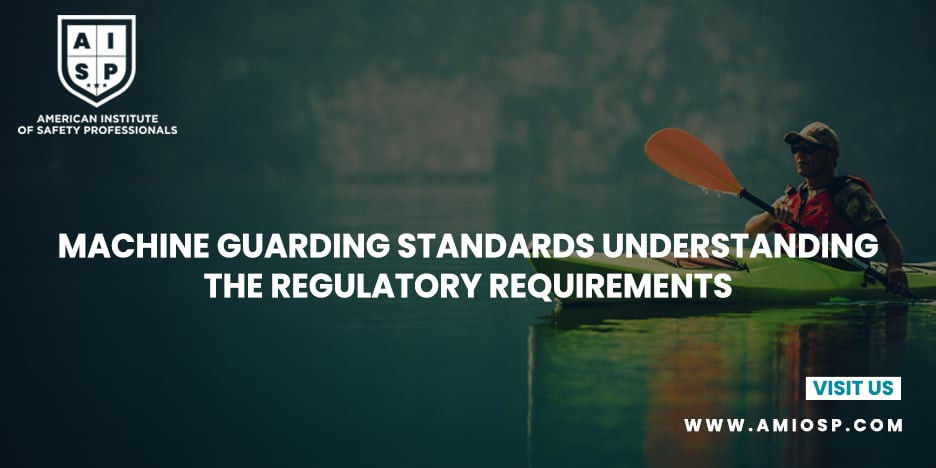Machine guarding plays a crucial role in ensuring the safety
and well-being of workers in industrial settings. With the potential hazards
associated with operating machinery, it is essential for organizations to
adhere to specific regulatory requirements to prevent accidents and protect
employees. In this blog post, we will explore machine guarding standards and
provide an in-depth understanding of the regulatory requirements that businesses
need to comply with.
What is Machine Guarding?
Machine guarding refers to the implementation of protective
barriers and safety measures around machinery to eliminate or minimize hazards.
These hazards can include moving parts, flying debris, sparks, electrical
energy, and more. The primary objective of machine guarding is to prevent
accidental contact or exposure to these hazards, reducing the risk of injuries
or fatalities.
Why are Machine Guarding Standards Important?
Machine-related injuries can have severe consequences for
both employees and organizations. Without proper safeguards, workers may suffer
amputations, fractures, burns, or other traumatic injuries. These incidents can
result in significant medical expenses, lost productivity, legal implications,
and reputational damage to the company. By adhering to machine guarding
standards, businesses can create a safer work environment, mitigate risks, and
maintain compliance with regulations.
Understanding Regulatory Requirements
Numerous regulatory bodies have established specific
standards and guidelines for machine guarding to promote workplace safety.
These requirements vary across jurisdictions, but some common regulatory bodies
and standards include:
- Occupational
Safety and Health Administration (OSHA): In the United States, OSHA
sets forth machine guarding standards under 29 CFR 1910.212. These
standards define the general requirements for guarding machine hazards,
such as point of operation, power transmission, and rotating parts.
- European
Machinery Directive: The European Union enforces the Machinery
Directive (2006/42/EC), which outlines essential health and safety
requirements for machinery design and construction. It covers various
aspects, including ergonomics, noise emissions, and protection against
hazards.
- International
Organization for Standardization (ISO): ISO has developed several
standards related to machine guarding, such as ISO 12100 (Safety of
machinery - General principles for design) and ISO 13857 (Safety distances
to prevent hazard zones being reached by upper and lower limbs).
- Canadian
Standards Association (CSA): Canada follows the CSA Z432 standard,
which provides guidelines for safeguarding machinery and specifies
requirements for different types of guards, interlocks, and safety
devices.
Key Elements of Machine Guarding Standards
While the specific requirements may vary depending on the
jurisdiction and industry, machine guarding standards typically encompass the
following key elements:
- Point
of Operation Guarding: Guards must be in place to prevent access to
the point of operation, where the machine performs its intended function.
These guards should be secure, sturdy, and designed to minimize the risk
of contact with hazardous areas.
- Power
Transmission Guarding: Machines with rotating components, such as
belts, pulleys, gears, and chains, require appropriate guarding to prevent
entanglement hazards. Guards should enclose these parts to prevent
accidental contact.
- Electrical
and Control System Safeguards: Electrical equipment associated with
machinery should be adequately protected to prevent electric shocks, short
circuits, or other electrical hazards. Control systems should also
incorporate safety features to ensure machines cannot operate when guards
are removed.
- Device
Interlocks and Safety Controls: Interlocks and safety controls are
mechanisms that prevent machines from operating under unsafe conditions or
when guards are not in place. These systems may include emergency stop
buttons, two-hand controls, safety interlocks, or light curtains.
- Training
and Signage: Employers must provide comprehensive training to
employees on machine safety, including the proper use of guards and safety
devices. Additionally, clear signage should be displayed to indicate
potential hazards and safety precautions.
Benefits of Compliance
Complying with machine guarding standards offers numerous
benefits for businesses and workers alike:
- Worker
Safety: Compliance reduces the risk of injuries and promotes a safe
working environment, enhancing employee morale and productivity.
- Legal
Compliance: Adhering to regulatory requirements helps businesses avoid
penalties, fines, and legal consequences resulting from non-compliance.
- Cost
Savings: Preventing accidents through effective machine guarding reduces
medical expenses, worker compensation claims, and potential litigation
costs.
- Reputation:
Demonstrating a commitment to worker safety and regulatory compliance
enhances the organization's reputation among employees, customers, and
stakeholders.
Conclusion
Machine guarding is a critical aspect of workplace safety
that cannot be overlooked. Understanding and complying with machine guarding
standards, such as those established by OSHA, the European Machinery Directive,
ISO, and CSA, is essential for organizations operating machinery. By
implementing proper safeguards, businesses can protect their employees, prevent
accidents, and create a safe and compliant work environment. Investing in
machine guarding is not only a legal obligation but also a moral responsibility
to prioritize the well-being of workers.











0 comments
No Comments